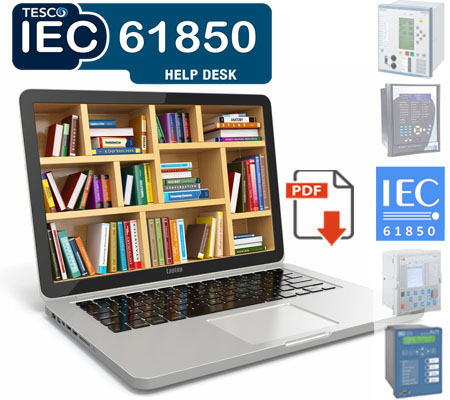IEC 61850 is an international standard for communication and interoperability of substation automation systems. It is developed by the International Electrotechnical Commission (IEC) and is widely used in the electrical power industry. The standard defines a comprehensive set of protocols and data models for the exchange of information within and between electrical substations.

Purpose and Benefits of IEC 61850:
IEC 61850 aims to standardize the communication between various devices in a substation, such as protection relays, intelligent electronic devices (IEDs), and control systems. It provides a common language and framework for integrating different substation automation functions, including protection, control, monitoring, and maintenance.
The standard promotes interoperability, allowing devices from different vendors to communicate and work together seamlessly.
IEC 61850 enables advanced functionalities like centralized control, system-wide monitoring, and improved fault diagnosis in substations.
It supports the move towards digital substations, where traditional analog signals are replaced by digital data exchange, leading to increased efficiency and flexibility.
Communication Architecture:
IEC 61850 defines a client-server-based communication architecture. The devices in a substation are categorized as servers (IEDs) and clients (control systems or HMIs). Communication between devices is facilitated through Ethernet-based networks. Data is organized into logical devices, which represent different functional units within a substation, such as circuit breakers, transformers, or measurement points.
Each logical device contains data objects, which represent specific information like status, measurements, settings, or control commands.
Data Modeling:

IEC61850 utilizes the Common Information Model (CIM) as the foundation for data modeling. CIM provides a standardized representation of power system information.
Services and Protocols:
IEC 61850 specifies a set of services and protocols for communication between devices. These include Generic Object Oriented Substation Event (GOOSE), Sampled Values (SV), and Manufacturing Message Specification (MMS).
GOOSE enables fast and reliable transmission of real-time information, such as trip signals or alarm messages, using multicast communication. the exchange of sampled analog and digital values between devices for real-time monitoring and control applications.MMS provides a comprehensive set of services for configuration, control, and data exchange between clients and servers.
IEC 61850 plays a crucial role in the modernization and standardization of substation automation systems. It enables efficient and reliable communication between devices, facilitates advanced automation functionalities
